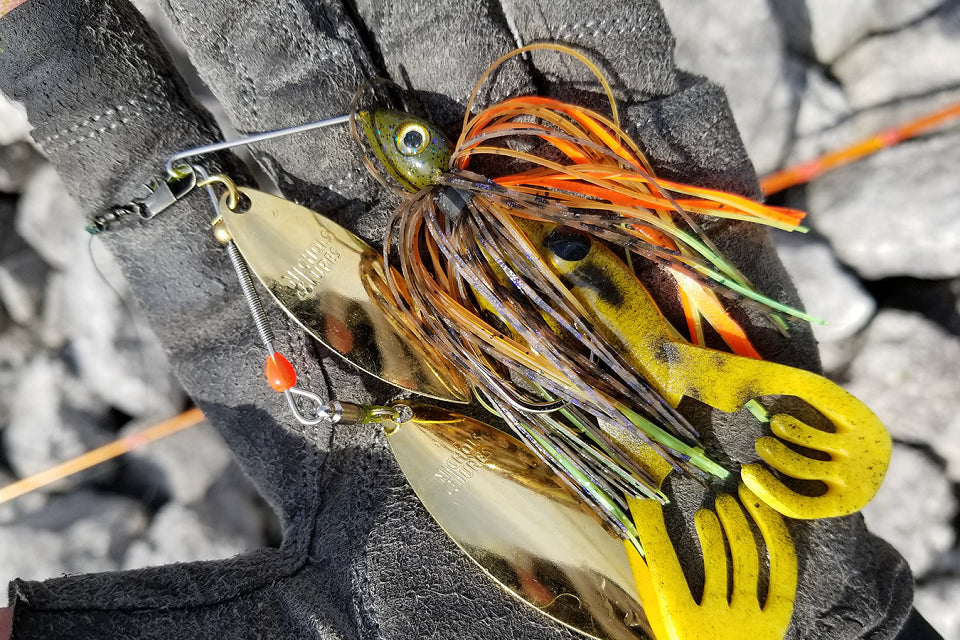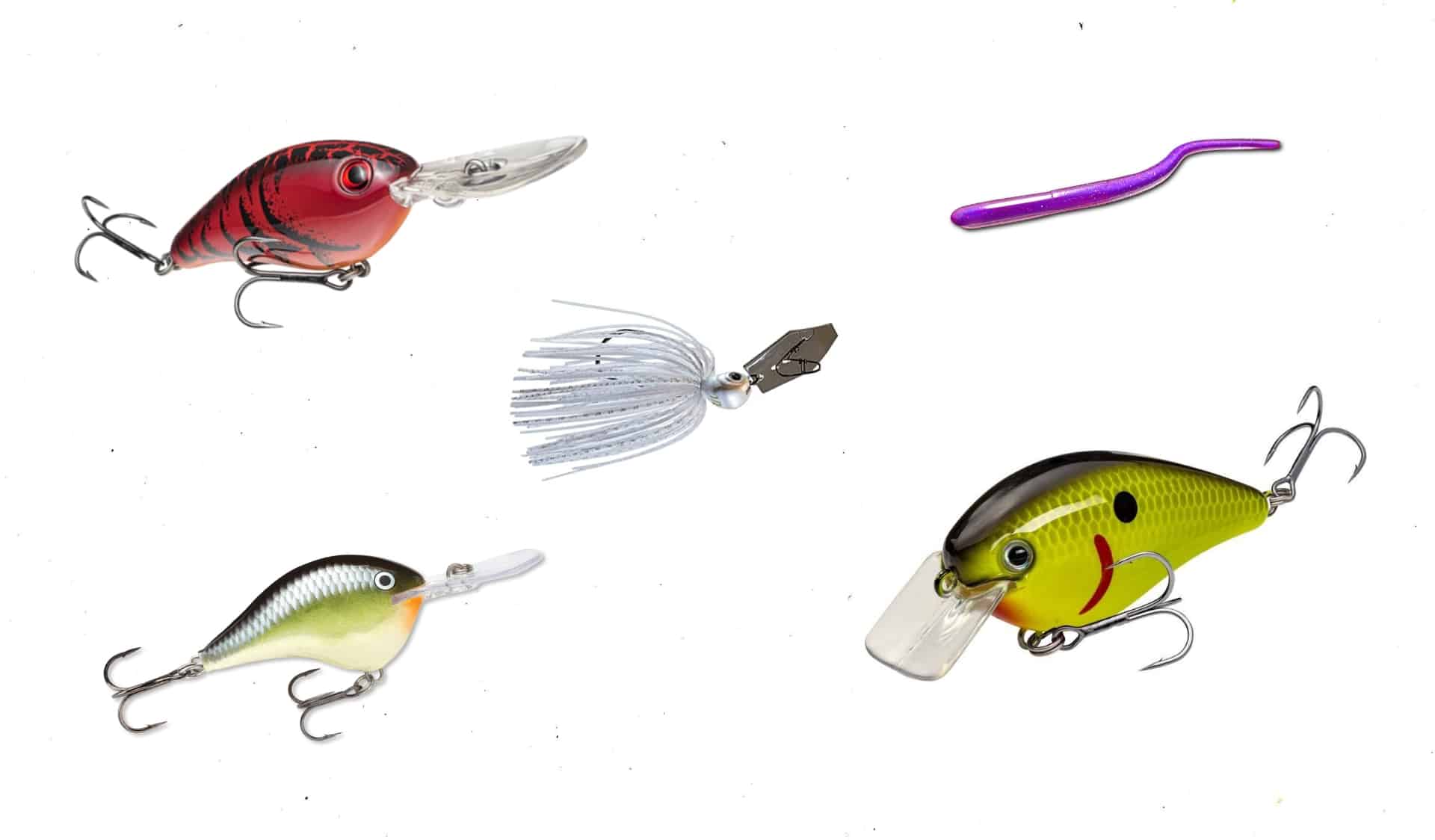The Most Common Mistakes Anglers Make When Selecting Best Bass Lures and How to Avoid Them
Discover the Secrets Behind Efficient Bass Lures to Improve Your Angling Experience
Comprehending the intricacies of bass Lures can greatly affect fishing success. Numerous Lures serve unique functions, from crankbaits made for broad insurance coverage to jigs that target details frameworks. The performance of these Lures frequently rests on factors such as color, activity, and seasonal patterns. By understanding these aspects, fishermens can open an extra gratifying experience. Yet, the inquiry continues to be: which strategies will generate the very best outcomes on the water?
Recognizing Bass Actions and Habitat
Comprehending the behavior and habitat of bass is critical for anglers looking for success on the water. Bass are functional fish discovered in different freshwater settings, including ponds, lakes, and rivers. They have a tendency to prefer locations with framework, such as immersed rocks, dropped trees, and aquatic plant life, which give shelter and hunting premises.
Seasonal patterns substantially affect their habits; in warmer months, bass typically inhabit shallow waters, while they retreat to deeper locations during colder seasons. Bass Lures. Their feeding routines are opportunistic, with a diet consisting generally of smaller sized fish, bugs, and crustaceans
Time of day likewise plays a role; bass are more energetic during very early mornings and late nights. Weather can influence their actions also, as overcast days might encourage shallow feeding, whereas brilliant sunshine frequently drives them to seek cover. Acknowledging these patterns equips fishermens with the understanding needed for effective fishing approaches.
Kinds Of Bass Lures and Their Makes use of
A range of bass Lures are essential devices for fishermens intending to attract this popular game fish. These Lures can be categorized right into several types, each serving unique functions. Crankbaits, developed to resemble the swimming activity of baitfish, work for covering huge areas swiftly. Spinnerbaits, featuring rotating blades, create vibrations and flashes that can entice bass hiding in cover. Jigs, with their heavy heads and weedless style, are suitable for lower fishing, permitting fishermens to existing lure near structures where bass commonly prowl. Soft plastics, such as worms and creature baits, supply adaptability and can be set up in numerous ways to adapt to differing problems. Topwater appeals, like poppers and frogs, are best utilized during low-light hours when bass are proactively feeding on the surface. Each sort of lure plays an important function in enhancing fishing experiences and enhancing the chance of successful catches.

Shade and Style: What Draws In Bass?
What elements influence bass destination to particular lure design and colors? The interplay of light, water clearness, and the natural surroundings plays a crucial role. Brilliant colors, such as chartreuse and orange, can capture a bass's eye in dirty waters, while extra suppressed tones like blues and greens may succeed in clear problems.
Design components, consisting of shape and activity, additionally considerably effect bass destination. Lures that imitate all-natural prey, such as baitfish or crawfish, are especially reliable. Additionally, the existence of reasonable details, like scales or fins, improves the realistic appearance, more tempting bass.
Emotional elements, such as a bass's feeding practices and territorial instincts, have to not be neglected. In particular scenarios, bold designs can provoke a reaction from aggressive bass, while subtle variants can appeal to a lot more mindful fish. Inevitably, understanding color and design nuances is essential for maximizing lure performance.
Matching Lures to Water Conditions
Picking the right attraction entails more than just shade and layout; water problems play a significant function in determining one of the most effective choices. Aspects such as water temperature level, clarity, and depth directly influence bass behavior and their feeding patterns. In clear water, subtle discussions and natural colors tend to be a lot more effective, while dirty problems may ask for brighter, extra lively Lures that can stand out.
Temperature level likewise impacts bass task; during warmer months, faster-moving Lures can generate strikes, whereas cooler temperature levels may need slower, a lot more intentional discussions. In addition, much deeper waters frequently demand heavier Lures that can get to the wanted deepness, while shallow locations are better matched for lighter, surface-oriented choices.
Methods for Reliable Tempt Presentation
Grasping the techniques for reliable appeal discussion can substantially enhance fishing success. Fishermens ought to concentrate on the speed and rhythm of their retrieves, adjusting them to mimic the natural motion of prey. A consistent obtain works well for numerous appeals, yet including stops can trigger strikes from much more careful fish. Furthermore, differing the depth of the appeal is essential; utilizing different spreading angles and changing the reel can assist resource target fish at different midsts.
Using a mix of finesse presentations, such as twitching or dragging the lure across the base, can likewise be effective. It is essential for fishermens to read the water and change their methods based on presence and structure. Presenting Lures near cover, like submerged rocks or plants, usually yields far better outcomes, as bass tend to seek sanctuary. Eventually, trying out various strategies will certainly result in a much more rewarding angling experience.
Seasonal Considerations for Lure Selection
Seasonal adjustments substantially affect bass habits and attraction efficiency. As water temperatures vary, anglers must adjust their lure selections to align with pre-spawning and post-spawn problems. Understanding these seasonal patterns can enhance angling success by targeting bass at their most energetic times.
Seasonal Water Temperature Effects
As water temperatures rise and fall throughout the year, bass habits and feeding patterns alter, affecting the effectiveness of various appeals. During cooler months, bass often Read Full Report tend to become tired, preferring slow-moving Lures that simulate struggling victim. On the other hand, as temperature levels climb in spring, bass become extra energetic, making faster, a lot more hostile Lures effective. Mid-summer sees bass looking for deeper, cooler waters, requiring making use of Lures that can get to these depths. As temperature levels begin to drop in autumn, bass often feed greatly to prepare for winter, making functional Lures that can imitate a range of forage types particularly effective. Understanding these seasonal temperature results allows fishermens to pick appropriate Lures that straighten with bass behavior, maximizing their angling success.
Pre-Spawning Draw Choices
What variables affect the choice of Lures during the pre-spawning period for bass? Fishermens have to take into consideration water temperature, weather, and the bass's feeding habits. As temperature levels increase and days extend, bass come to be much more active and aggressive, triggering a shift in their feeding patterns. During this time, tempts that resemble the natural prey of bass-- such as shad or bluegill-- are specifically effective. Popular options include spinnerbaits, lipless crankbaits, and jigs, which can be fished at different depths. Furthermore, fishermens need to concentrate on locations with cover, such as immersed vegetation or rough frameworks, as these places typically bring in pre-spawn bass. Best Bass Lures South Africa. Recognizing these elements can significantly boost the opportunities of a successful angling trip throughout this essential seasonal phase
Post-Spawn Techniques Adjustments
Post-spawn bass exhibit different behaviors than during the pre-spawn phase, effective appeal option stays crucial for anglers intending to target them effectively. After spawning, bass typically become lethargic and look for much deeper waters, making it crucial to check my reference adjust appeal choices appropriately. Fishermens must consider making use of slower-moving baits, such as jigs or soft plastics, which can attract bass that are less aggressive. Crankbaits with a subtle activity can additionally work, permitting a slower discussion that imitates the all-natural post-spawn forage. Additionally, fishing near structure, such as submerged greenery or rocks, can enhance opportunities of success. By recognizing these seasonal adjustments, fishermens can boost their fishing experience and improve their catch prices during the post-spawn period.
Often Asked Inquiries
How Do I Choose the Right Pole for Bass Angling?
To select the best rod for bass angling, one must take into consideration the pole's size, power, and action. A medium to medium-heavy rod, around 6 to 7 feet, is frequently optimal for versatility and control.

What Is the very best Time of Day to Capture Bass?
The most effective time of day to capture bass is usually very early morning and late mid-day. Throughout these periods, bass are much more active, feeding near the surface, making them simpler targets for fishermens utilizing reliable attractions.
Exactly How Do Climate Condition Impact Bass Angling Success?
Climate condition substantially influence bass fishing success. Warmer temperatures and cloudy skies frequently urge bass task, while chilly fronts can cause lethargy. Rainfall can also boost feeding actions, making it important for anglers to adapt their approaches as necessary.
Can I Make Use Of Lures for Various Other Fish Variety?
Yes, draws designed for bass can additionally be effective for various other fish varieties. Selecting the appropriate size, shade, and activity according to the target varieties and their feeding routines continues to be critical for success.
What Are Typical Errors When Using Bass Lures?
Common mistakes when making use of bass Lures include picking inappropriate dimensions or shades, recovering too quickly, stopping working to adjust to weather, and ruling out water deepness. These errors can considerably decrease the possibilities of an effective catch.
As water temperatures change throughout the year, bass habits and feeding patterns alter, affecting the efficiency of different lures. Mid-summer sees bass looking for deeper, cooler waters, requiring the use of Lures that can reach these depths. Post-spawn bass display various habits than during the pre-spawn stage, reliable lure selection remains crucial for fishermens intending to target them effectively. After spawning, bass usually become lethargic and seek much deeper waters, making it essential to readjust appeal options appropriately. Typical blunders when using bass Lures include choosing improper dimensions or shades, retrieving also rapidly, failing to adapt to weather conditions, and not thinking about water deepness.